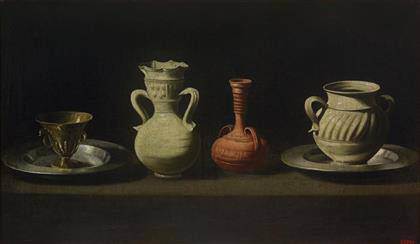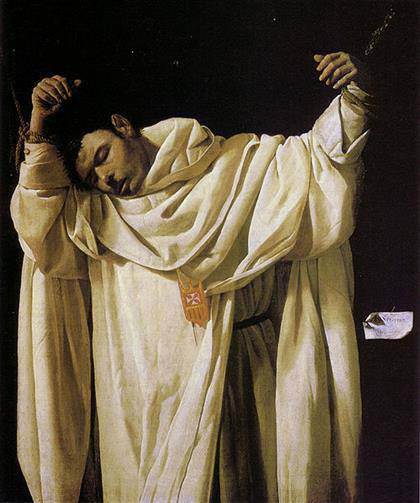
Francisco de Zurbarán. Bodegón con cacharros, c. 1650-1655.Oil on canvas, 47 x 79 cm. Barcelona, MNAC. Museu Nacionald’Art de Catalunya. Legado de la Colección Cambó

Francisco de Zurbarán. San Serapio, 1628.Oil on canvas, 120,2 x 104 cm. Hartford,CT, Wadsworth Atheneum Museum of Art.The Ella Gallup Sumner and Mary CatlinSumner Collection
Zurbarán: a new perspective – Thyssen Museum The Museo Thyssen-Bornemisza is presenting the exhibition Zurbarán: a new perspective, which will offer a fresh assessment of the work of this great master. 9 June to 13 September 2015.]]>
Source: Museo Thyssen-Bornemisza
Francisco de Zurbarán was one of the most innovative artists of his time. The appeal of his work extends beyond Spain, making him a key figure among the leading names of European painting. A painter of the specific, the combination of Zurbarán’s geometrical, hard-edged forms, large, plain areas of paint and the silent, solemn universe conveyed in his work allows him to be associated with the aesthetics of some of the 20th-century art movements from Cubism to Metaphysical painting, again revealing the artist’s modernity and ongoing relevance.
Zurbarán is also one of the 17th-century Spanish artists who has best expressed religious sentiment, offering in his works a subtle synthesis between mysticism and realism. He spent most of his life in Seville where he produced devotional paintings, altarpieces and series on monastic subjects for the large number of religious communities in the city at that time, including the Dominicans, Franciscans and Mercedarians. These Orders commissioned pictorial cycles from the artist that mark out the progress of his career and which required workshop participation from an early date. Zurbarán’s original style, which is extremely distinctive and evolved slowly, is defined by a tenebrist approach to light, the use of simple, static compositions and a minutely detailed rendering of the tactile values of the objects depicted.
The artist’s sculptural figures, with their monumental, profoundly dignified presence, are solidly constructed in the pictorial space and illuminated by a strong, completely human type of light, thus giving the impression of being transfigured by their faith. An exceptional colourist, Zurbarán’s profound interest in expressing the textures of things means that the textiles and objects of whatever type (flowers, fruit, vessels, etc.,), even those located in secondary positions, become the principal motifs together with the figures’ faces and hands. Some of the finest examples are to be found in the artist’s celebrated series of female saints, whom he depicts in a completely innovative manner: alone, dressed in rich, elaborate clothes and with extremely beautiful faces and expressive gazes. Zurbarán also painted some of the most influential still lifes in Spanish art. Constructed from a few humble objects, these paintings convey to the viewer an entire world of spiritually charged emotions.
The exhibition will feature a total of 63 works, most of large format, displayed in seven galleries in chronological order but also in relation to the type of commission for which they were painted. Visitors will thus find areas devoted to the major commissions from the religious Orders alongside sections which focus on individual works intended for private devotion. Half-way round the exhibition there are two galleries devoted to still lifes and to the artists working in Zurbarán’s studio.
Related content
Retrospective on Raoul Dufy at Museo Thyssen-Bornemisza (exhibition, 2015)
Follow us on:


